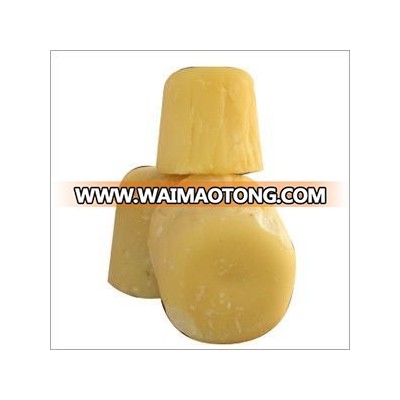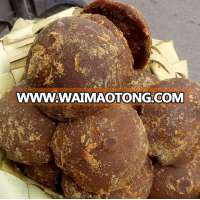Jaggery (also transliterated as jaggeree) is a traditional uncentrifuged sugar consumed in Asia and Africa.It is a concentrated product of date, cane juice, or palm sap without separation of the molasses and crystals, and can vary from golden brown to dark brown in color. It contains up to 50% sucrose, up to 20% invert sugars, and up to 20% moisture, with the remainder made up of other insoluble matter, such as wood ash, proteins, and bagasse fibers. Jaggery is mixed with other ingredients, such as peanuts, condensed milk, coconut, and white sugar, to produce several locally marketed and consumed delicacies.
Historically, the sugar cane cultivators used crushers which were oxen driven. Nowadays all the crushers are power driven. These crushers are located in fields near the sugar crop. The cut and cleaned sugar cane is put into the crusher. The extracted sugar cane juice is collected in a big vessel. Certain quantity of the juice is transferred to a smaller vessel for heating on a furnace.
The vessel is heated for about one hour. the dried wood pulp from the crushed sugar cane is used as fuel for the furnace. While boiling the juice, some lime is added to it so that all the wood particles are collected on top of the juice in a froth during boiling which is skimmed off. Finally the juice thickened and reduced to nearly one- third of the original volume. This hot liquid is golden in color. It is stirred continuously and lifted with a spatula to observe whether it forms a thread or drips dropwise while falling. If it forms many threads, it has completely thickened. Now it is poured into a shallow flat bottomed concrete tank to cool and solidify. The tank is large enough to allow only a thin coat of this hot liquid to form at its bottom, so as to increase the surface area for quick evaporation and cooling. After cooling down the jaggery becomes a soft solid which is now pressed into the desired shape for selling at the market.
The quality of the jaggery is judged by its color; brown means it is higher in impurities and golden-yellow implies it is relatively pure. Due to this grading scale there are malpractices of adding color or harmful chemicals to simulate the golden color.
Jaggery, also called gurh, is used as an ingredient in sweet and savory dishes across India, Bangladesh, Pakistan and Sri Lanka. For example, a pinch of it is sometimes added to sambar, rasam, and other staples. Jaggery is added to lentil soups to add sweetness to balance the spicy, salty and sour components, particularly in Gujarati cuisine.
Maharashtra is the largest producer and consumer of jaggery most vegetable dishes, curries, and dals contain it. This is specially used during Makar Sankranti for making a dessert called tilgul. In Gujarat, known as GUD during Makara Sankranti, a similar preparation called tal na ladu or tal sankli is made. In rural Maharashtra and Karnataka, water and a piece of jaggery is given when someone arrives home from working under a hot sun.














